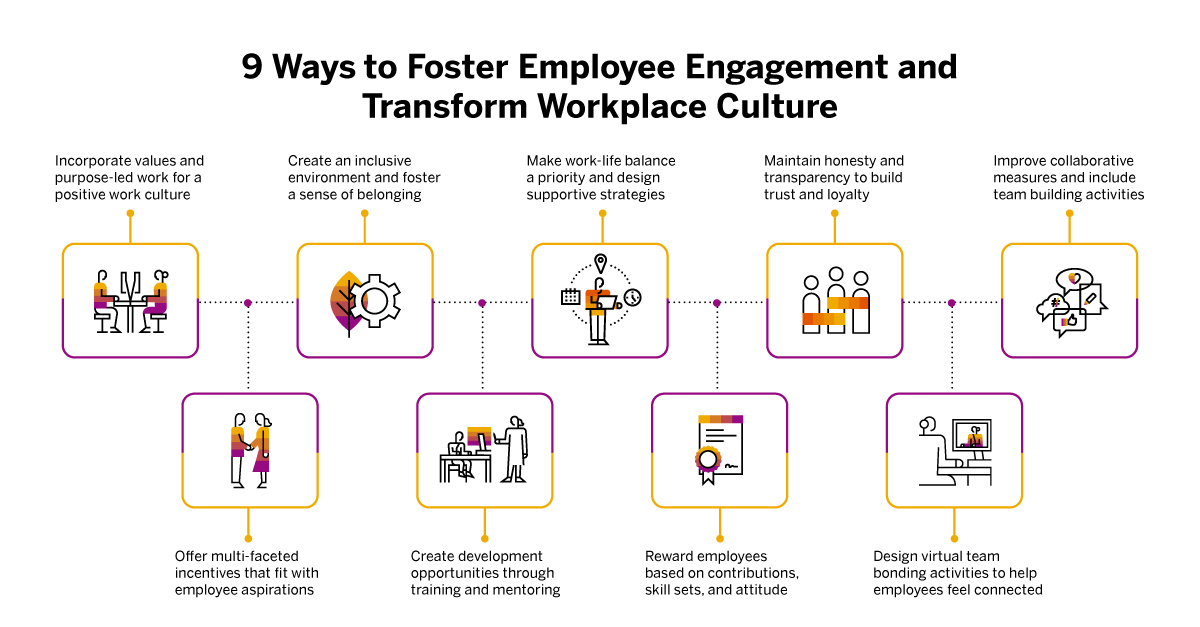It’s not an exaggeration to say that the pandemic has fundamentally rewritten the script for how people around the world are living their lives today. This also includes how we work, commute, and engage with our workplaces and colleagues, whether remotely or in a hybrid model. A significant trend that has emerged is the dramatic increase in employee attrition, a trend previously unseen in this decade. A study conducted by MIT Sloan School of Management attributes toxic workplace culture as a major reason for millions of employees calling it quits in 2021.
The Great Resignation in India
The Great Resignation, as the trend has been hailed, resulted in more than 24 million American workers resigning from their jobs, in sectors as diverse as healthcare, transportation, retail, hospitality, education, and warehousing. Employees are not just quitting in the U.S.; closer home, the IT industry is witnessing rising attrition, as per an e-commerce major’s recent survey. A Forbes India report highlighted that the top 5 IT companies in the country hired as many as 1.7 lakh professionals in 2021 due to rising attrition and high demand for tech-skilled employees.
What might come as a surprise is that The Great Resignation trend is not completely attributable to the pandemic; if anything, the latter merely exacerbated a movement that was already gaining momentum among employees and workers of the Global North. What’s at stake is the future of work and business performance. For one, if companies fail to hire highly motivated candidates and retain their star performers, it could lead to further disruptions in productivity and growth in a market that has already seen dramatic lows from Covid-19.
Younger workforce driving change
In the backdrop of these cultural and organizational challenges, it is essential that hiring managers and companies bring their A-game to designing a better workplace culture. What is fueling the need for this change? In one word: GenZ! Often dubbed as the woke generation, the rising number of 18–28-year-olds in the workforce is forcing recruitment managers and employers to think out of the box about incentives, workplace design, collaboration, and fostering a sense of belonging. This generation of workers is looking for more involvement with their teams, flexibility in schedules and place of work (think, co-working spaces and hybrid or remote), and look to the organization’s mission and values to foster a sense of purpose at work.
Disengaged employees
Besides a poor work environment, employees are quitting the workforce in large numbers for other reasons. This includes searching for better pay, hunting for job opportunities in other industries, looking for profiles that better fit their values, and most critically, to recover from burnout brought on by years of dysfunctional work environments, competition straight out of college, and long working hours. According to a Gallup survey, only 36% of employees in the USA felt engaged at their current workplace. The situation in India is not likely to be better; rather, the chances are that it is far bleaker.

Here are the top 5 reasons why employees are disengaged at work:
- Ambiguous career path
Uncertainty at work is the enemy of confidence and productivity. Include a clearly mapped growth path for an employee’s role and what kind of responsibilities they will handle in the future. The absence of a well-drawn profile map nudges many employees to quit.
- Mismatched incentives and appraisals
We all want our talents and efforts to be appreciated and rewarded with tangible incentives (money, that’s obvious). But a younger workforce also expects benefits and perks that are non-monetary. This could be in the form of company-funded training, team outings, mental health coach, and appraisals that take place more frequently. When employees don’t get offered appropriate incentives in line with their efforts, it impacts productivity and leads to poor engagement.
- Dysfunctional management
You know that adage, ‘employees don’t quit offices, they leave their managers’? Never has it been more appropriate to describe the current trend of The Great Resignation than during the pandemic, when professionals continue to quit their jobs due to dysfunctional bosses. Unreasonable productivity demands, bosses compelling employees to stretch beyond regular work hours, use of foul or abusive language in the office, and lack of mentorship and support impact the morale of employees.
- Negative work environment
Employees bring in their best selves to work when the environment is positive, optimistic, and supportive. HR policies and management practices need to align with industry best practices for workplace behaviors. This means discouraging negative chatter, unhealthy competition, avoiding favoritism, and being extremely mindful to avoid discrimination in hiring practices and during appraisals. The absence of such benchmarks has a direct impact on employee productivity and morale, leading to high quit rates.
- Inappropriate cultural fit
An organization’s core values act as a signpost that guides beliefs, behaviors, communications protocol, and attitudes at work. Workplace culture needs to evolve with a predominantly younger generation sitting at the foundation of the organization. Not having a clearly defined value system can alienate employees and contribute to low engagement at work.
- Positive impact on bottom line
If disengaged employees impact the performance of a company, then the flipside of the narrative should be true: happy employees have a positive impact on a company’s bottom line. The good news? There is a correlation! 93% of respondents in a survey agreed that organizational performance increases when employees feel a sense of belonging. That is why it is important for companies to lead with motivation, mission, and a management culture that is mindful while engaging with the younger workforce.
4 reasons why positive employee experience is critical for businesses:
- Helps reduce attrition rates
Highly engaged employees are more likely to remain loyal to their organizations than disengaged ones. Money may be a motivating factor for employees to jump companies; however, businesses can overcome this problem by offering a positive work culture. Moreover, hiring and training new employees often come at a higher cost than retaining existing employees who are already familiar with work processes and are a cultural fit.
- Leads to more productive employees
Happy employees will show better engagement and productivity at the workplace. Their enthusiasm will also rub onto other people who are likely to be motivated to perform better. Sparking engagement among employees is thus crucial to attain team cohesion and attain the desired business results.
- Helps attract the best talent
The shortage of skills in the global job market is making it tough for employees to attract and retain the right talent. Businesses that offer work-life harmony, offer employees learning opportunities, better incentives, and positively encourage employees to prioritize self-care are more likely to attract top talents in the job market.
- Enables improved customer experience
Customer service can make or break the reputation and repeat value of a business. Happy employees, especially those who deal and interact with your customers directly, are responsible for setting a positive first impression. Such employees are likely to go the extra mile to offer the best experiences and solutions to their customers.
Redefining the employee experience
As businesses shift their focus from survival mode to recovery and short-term growth during the third wave of the pandemic, there is a need to redefine the employee experience. This is applicable not just for seasoned professionals, but for the millions of freshers for whom 2022 might well be their debut foray at work. According to a PWC survey, 63% of CFOs want to redesign their products and services to generate revenue. However, this change will happen only when the organizational culture keeps pace with the zeitgeist of its employees.

Here are 9 ways to foster employee engagement:
-
Incorporate values and purpose-led work
Every company needs to craft core values that define its internal culture, purpose and larger mission. There are benchmarks that define organizations that earn the ‘great place to work’ title. Organizations thus need to create a work culture that is positive and friendly for the employees. Management is the best place, to begin with, as leaders can help build that desired culture.
-
Create an inclusive environment
In a survey of 7,000 individuals from 35 organizations, Culture Amp and Paradigm found that “a single metric that was consistently and universally tied to a person’s workplace commitment, motivation, pride and recommendation was feeling a sense of belonging.” Some of the ways that managers can foster a sense of belonging in their teams is by asking for their inputs and ideas during project planning phase, appreciating their efforts consistently, and demonstrating your faith in them by giving them the opportunity to lead a project, event, client pitch, or activity.
-
Make work-life balance a priority
Work-life harmony has become a priority not just for younger professionals, but a majority of the global workforce. A PWC survey says that 52% of companies plan to shift their employees to remote working permanently. Remote work has led to the blurring of lines between personal and professional lives; Zoom fatigue is real and burnout from being available on-call throughout the day for multiple meetings has eaten into employee morale and productivity. Managers need to design strategies and schedules that help improve work-life balance.
-
Maintain honesty and transparency
Maintain transparency while communicating with your employees in order to build trust and loyalty within your teams. This helps eliminate an environment of mistrust and shows that you genuinely care about your employees. For example, if an employee feedback survey had specific areas of concern pertaining to news about your company’s performance, ensure you address this in an open forum with facts and explanations. Your employees will appreciate your honesty and emulate the same form of communication with their teams.
-
Improve collaborative measures
Team cohesion helps improve trust, fosters a sense of shared values, creates a positive work environment, encourages productivity, and ultimately impacts a company’s bottom line. Organizations should encourage collaboration among employees, both, within the same department and amongst other teams across the company. Team building activities allow employees the opportunity to develop empathy, earn respect, and build morale as a unit. This in turn encourages employees to work as a well-oiled unit to achieve larger organizational goals.
-
Multi-faceted incentives
Understand what truly benefits your employees, which you can best do through surveys and feedback forms. This could range from on-job training and upskilling, insurance and mental health services, food coupons and weekly team outings, to gym memberships, performance-linked incentives every quarter, and opportunities to lead. Whatever option you choose, ensure it fits with the aspirations and needs of your employees. Companies also offer flexi-time work, unlimited medical leaves, and no questions asked casual holidays demonstrate to employees that they are valued.
-
Create development opportunities
Mentoring and training are critical factors that can help employees stay connected. Help your employees in their professional development by giving them the chance to advance their skills. This can take the form of regular workshops and courses related to their profile and areas of interest. Offering training and upskilling options during work hours can help employees understand their career path and opportunities better.
-
Reward your employees
The best time to reward an employee is not when they decide to leave so that you can retain them. Performance appraisals need to be timely and provide both monetary and non-monetary incentives to all employees. Keep an eye on your top performers and design reward programs that are based on their contributions, skill sets, and attitude. Grooming your top performers for future leadership roles is also an important aspect of keeping them motivated.
-
Virtual team bonding
A happy workplace is all about enthusiastic people who can help others grow along with them. Having regular office outings can help improve the bonding between the team and make them feel more connected with each other. Secondly, with remote work becoming the norm in metros and Tier 1 cities, HR needs to design virtual activities that help employees feel connected with their colleagues remotely and nudges them to be productive.

Course correction: Workplace of the future
Though the pandemic is a disruptor of things, it has also given organizations a chance to course correct. There cannot be a better opportunity to revamp the workplace and reassess what aspects of the culture works and what needs to be redefined or let go. Besides, the change in status quo also affords us the possibility to remove ambiguity from various aspects of the workplace and reinforce our values.
Most organizations may have done well till this stage of the pandemic. The key is to build on that by taking your team into confidence and building on their ideas and vision for the company’s growth. Their satisfaction is critical to helping companies achieve their organizational goals.
If you are looking for HRIS software to streamline core HR processes, SuccessFactors Employee Central can help. SF employee central also supports employee self-services for the entire organization. Get more details on Employee Central Success Factors here.



